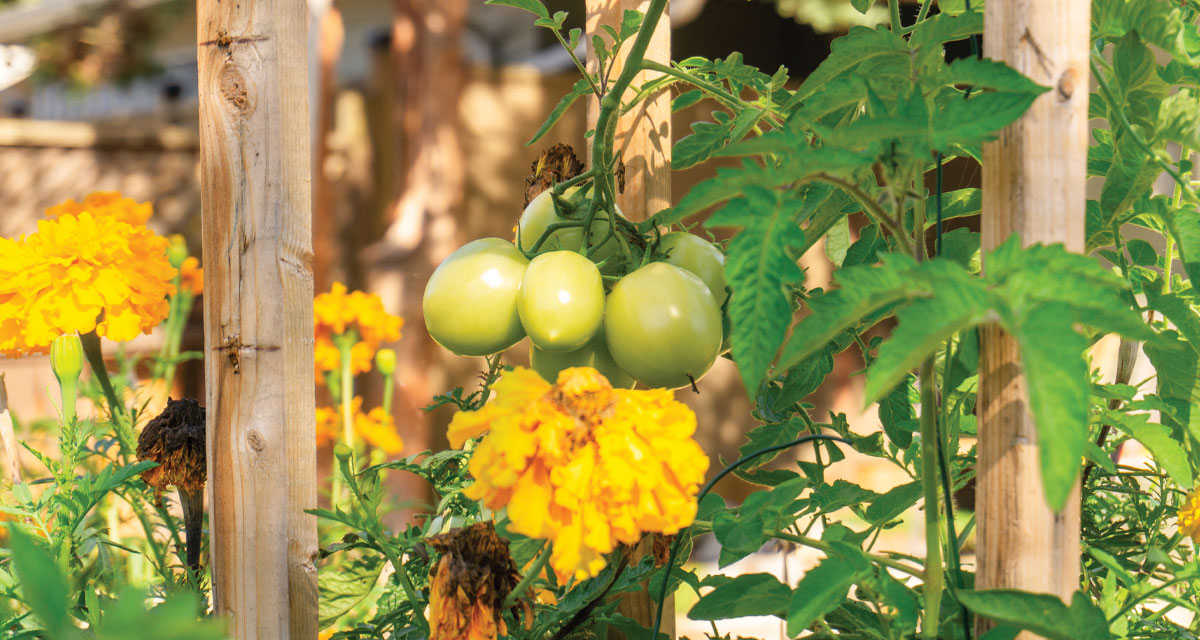The young, frail seedling needs protection, time, excellent soil, and water to gain strength and expand its roots in the ideal environment. The seen and unseen attackers pose a threat, whether it’s disease, insects, or animals, damaging to the point of hurting or killing the tender, young plant. Even trampling may impact the possibility of recovery. The gardener needs a plan of action before seeds germinate or established plants begin to grow. Rather than invest in toxic, unknown chemicals that cause harm to more than just pests, consider alternative options, such as natural control methods, companion planting, fencing, and traps.
Natural Control Methods
As gardeners, we think a plant’s success lies above ground; yet, it’s the roots and the richness of the soil that control health, growth, and vitality. Use the state of wellness above ground to determine the condition at the plant’s foundation. The earth is alive with billions of microorganisms inhabiting compostable matter, such as leaf mold, grass clippings, crushed eggshells, banana peels, and coffee grounds. (If not, begin to add such items to boost the mineral content of your garden.)
Start by using a good powder.
- Diatomaceous Earth: A natural substance, that when sprinkled, has small rough edges to slice up small soft-bodied insects, while not harming earthworms. Despite its tiny grains of powder, it smothers insect larvae and controls parasites, from aphids and squash bugs to mice and rabbits. It’s the perfect organic insecticide.
Companion Planting
Blossoms are one of the best solutions for a vegetable garden. Flowers are much more than pretty colors. celosia, rudbeckia, snapdragons, sunflowers, sweet peas, zinnias, and so many others, including herbs, provide food and habitat for beneficial insects when you balance vegetables with rows of flowers. Why use pesticides when an array of pollinators will not only come to you, whether you live in urban or rural areas, and help your cause by eating harmful bugs! Fascinating results will happen when you allow the flowers to stand guard and fight!
- A viable method to prevent overwatering is building mounds of dirt. As rain rolls down, the roots receive the moisture they need.
- Start researching companion planting. Anise and basil, for instance, help repel insects and disease, while improving tomatoes’ flavor. Planting oregano with broccoli repels the white cabbage fly!
Weeding
An easy, low-cost way to boost moisture and prevent weeds is to add several newspaper layers, either around the soil or over top of the mulch. Black plastic also works wonders. Otherwise, take some time each morning to remove an area of weeds with a tiller, hoe, or hand tool. You’ll eliminate the competition and provide all the sunlight and nutrients a plant needs to survive!
Fencing
The eye-catching garden fence can be charming while keeping out pesky critters. Keep in mind, however, that groundhogs and rabbits are diggers; therefore, bury the posts six inches below ground, and that will deter most animals. On the other hand, deer can jump 12 feet; so, focus on the animals you can restrain. Smaller fencing such as tomato cages or trellis’ can work wonders for fruit or vegetables that grow from either tall plants or vines.
Tip: Aluminum foil, surprisingly, is quite effective in a garden. It’s reflective, somewhat sturdy, and makes noise if brushed. Try it!
Traps
Did you know that yellow jackets are carnivores? Rather than purchase traps, try filling a bucket with water and adding a few drops of dishwashing liquid; then, tie a few pieces of chicken to a narrow board and lay it across the bucket’s surface. After a few hours or a day, check the bucket. You’ll collect hundreds of yellow jackets, but don’t expect this trap to work for all insects. Research to find out about others!
The Heroes of the Garden
To a pollinator, a flower appears like an electromagnetic light, sending out energy in ultraviolet colors. Holding a large sign, “Calling all butterflies!” isn’t necessary. If you plant flowers containing pollen and nectar, they will come! So, who are the efficient heroes of the insect world? Ants, assassin bugs, bats, dragonflies, soldier beetles, butterflies, hummingbirds, moths, tens of thousands of bees, spiders, and wasps. It’s important to identify the fluttering, flying, and walking heroes! Create a welcome mat by planting flowers, adding birdhouses, birdbaths, or a bee hotel! You have this! Good luck!
* Lisa Doss is an NC State Extension Master Gardener Volunteer and a State Certified Beekeeper.



















